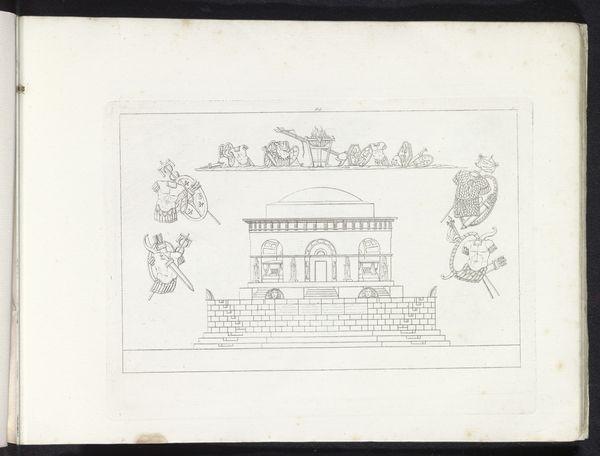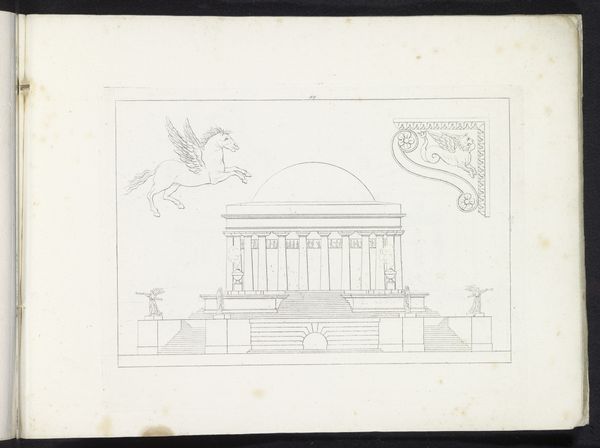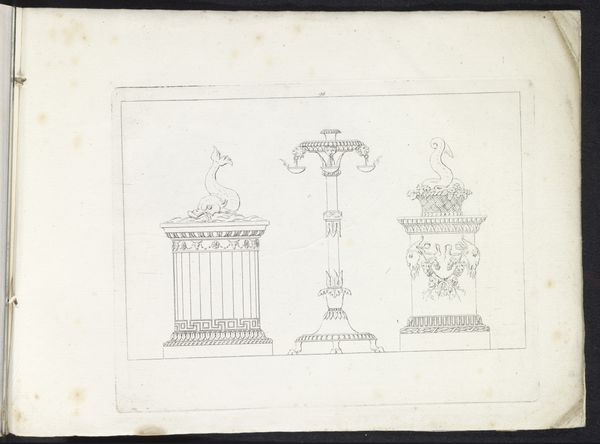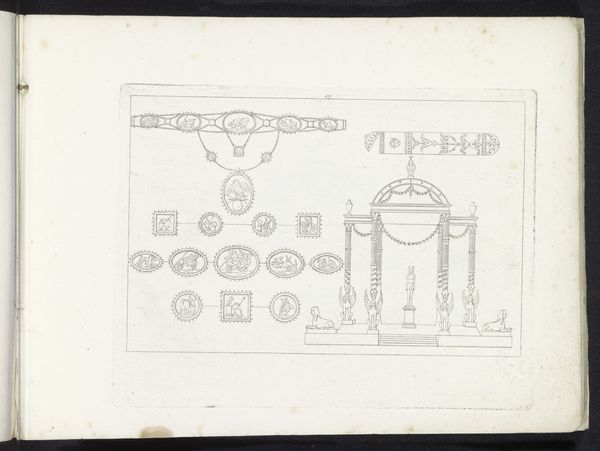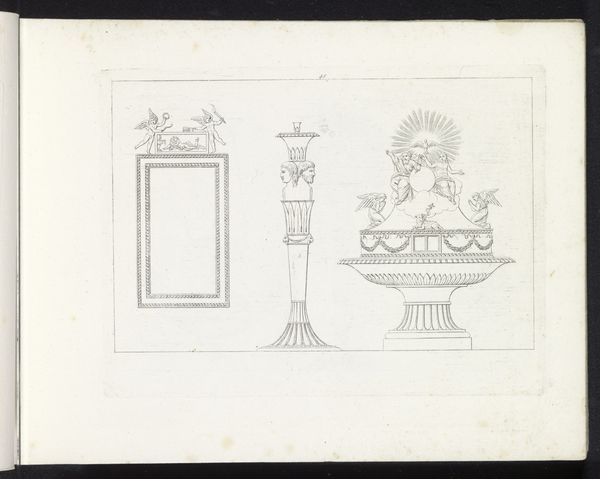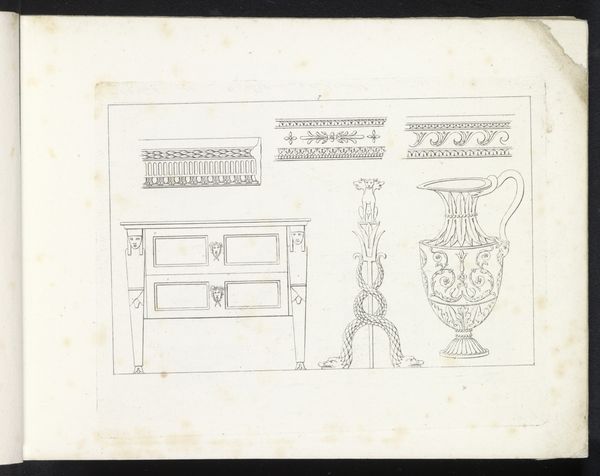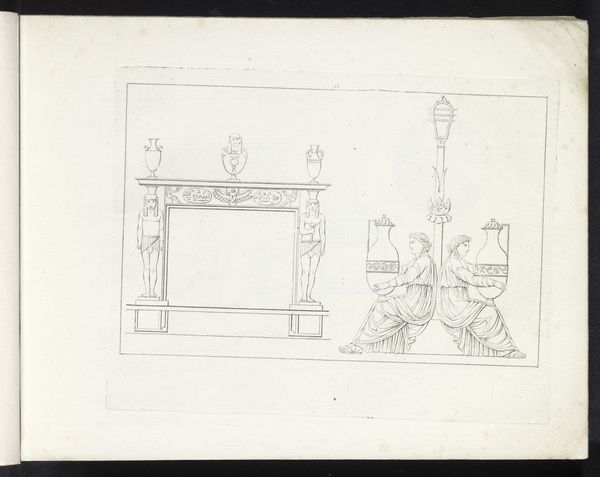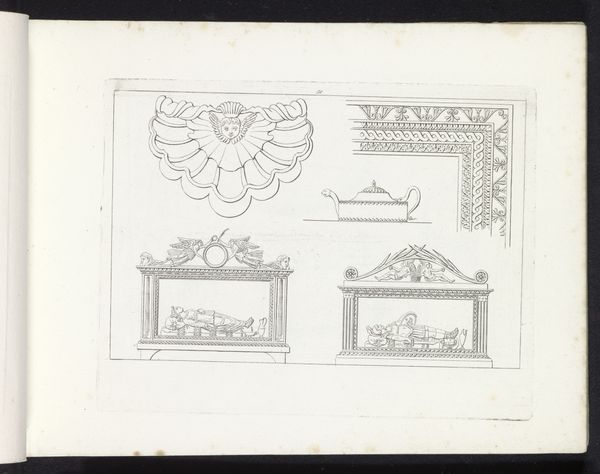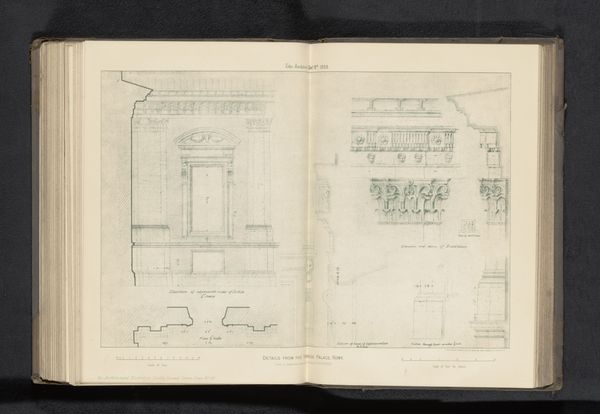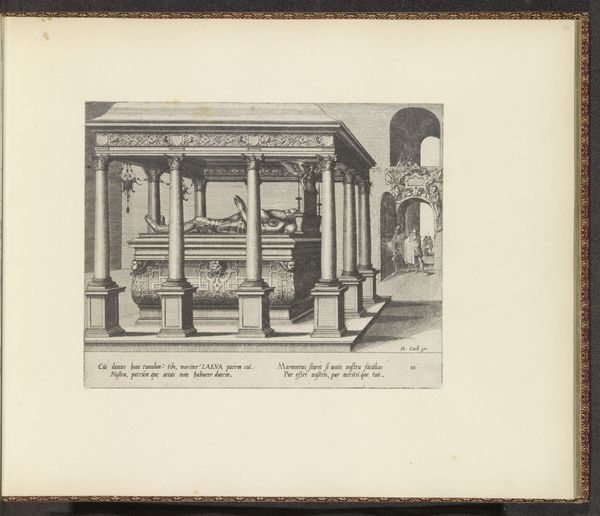
Twee tempels en Ceres op een rijtuig dat wordt voortgetrokken door twee draken 1817
0:00
0:00
drawing, paper, ink
#
drawing
#
neoclacissism
#
landscape
#
paper
#
ink
#
geometric
Dimensions: height 164 mm, width 217 mm
Copyright: Rijks Museum: Open Domain
Curator: This intricate drawing, rendered in ink on paper, is entitled "Twee tempels en Ceres op een rijtuig dat wordt voortgetrokken door twee draken"—or, in English, "Two Temples and Ceres on a Carriage Pulled by Two Dragons." It's attributed to Pietro Ruga and dates to 1817. What stands out to you at first glance? Editor: A sense of ethereal geometry. Everything feels precise and carefully placed, yet the light linework almost makes the temples seem as though they could fade away. And that chariot pulled by dragons above—there's a delightful tension between the solidity of architecture and the airy dynamism of the mythological scene. Curator: Yes, the placement does orchestrate an interesting dialogue, doesn't it? Let's start with Ceres, the Roman goddess of agriculture, fertility, and motherhood. Consider the implications of framing her centrally. What does that symbolize to you? Editor: Framing her as the figure soaring in the heavens above these temples immediately establishes power—legitimacy and an inherited divine right to shape worldly power structures. Given Ceres' association with abundance and the earth, this evokes both prosperity and possibly questions about access and control in her name. Curator: The artist adheres to the stylistic precepts of neoclassicism—notice the clarity of form, the emphasis on order, the invocation of Greco-Roman antiquity through geometric design. The temples are stark and monumental. However, I wonder what narratives they’re meant to symbolize beyond civic or imperial power? Editor: Right. And perhaps it's worth asking what "fertility" meant in the period context, and for whom? Temples were not spaces of open access for all, and even as sacred places, deeply mirrored the inequities of social access according to race, class, and gender. The symbols present may obscure very painful political realities and the violence inherent in maintaining those "classical" hierarchies. Curator: That intersectional understanding definitely complicates our view and makes a case for approaching the artist’s intention as more than just an expression of formal appreciation. The figure of Ceres drawn almost like a shadow figure hovering ethereally—do you think this visual element creates tension or promotes a theme, especially knowing this drawing surfaced around 1817? Editor: Perhaps Ruga attempts to remind viewers that perceived stability is a fiction. Despite our wishes, even the most powerful mythic figure and geometric edifices float across an uncertain terrain. The artist prompts us to engage critically with those notions of “grand narratives” presented and implied, if that reading holds up? Curator: Interesting perspective. I was focused more on the iconography, but you've really brought out the broader cultural context. It demonstrates, yet again, how a deeper reading can yield multiple, fascinating layers to otherwise rigid artwork. Editor: Indeed, and that tension is what ultimately keeps drawing me back in for further interrogation!
Comments
No comments
Be the first to comment and join the conversation on the ultimate creative platform.
